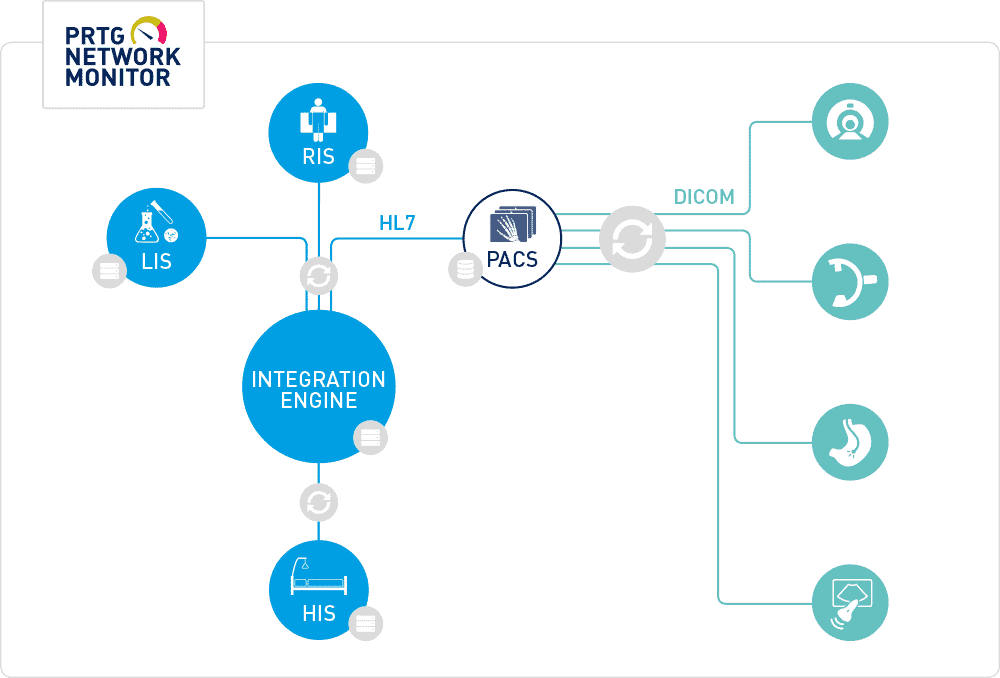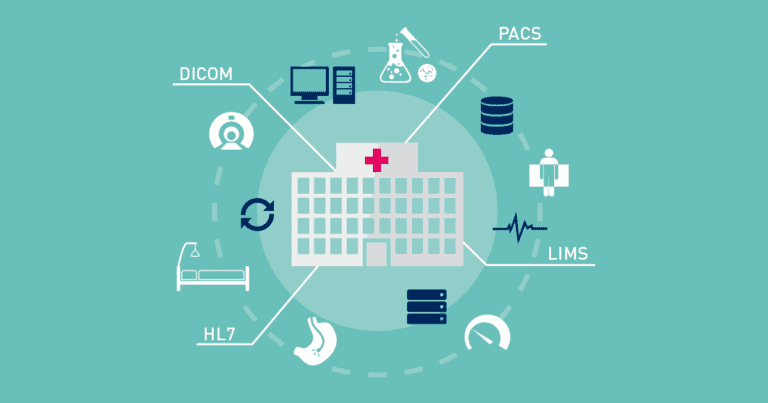How do you make sure you keep your organisation’s IT infrastructure up and running? An important topic within companies and even more so in critical sectors. Errors can cause certain activities to come to a complete stop, and this can have serious consequences. A crucial role is reserved for network monitoring solutions as becomes apparent when we speak to Peter Rog, director of IT service vendor Wizzbit.
Wizzbit has considerable experience in IT monitoring, especially with the PRTG Network Monitor solution of Paessler. With this solution, the company can monitor its IT infrastructure. When a particular part of the infrastructure malfunctions, it jeopardises the entire business operation. An IT-administrator wants to be informed about any problem as soon as possible to take immediate action. These actions can be done automatically or a signal can be sent to the right individual within the organisation.
Keeping infrastructure up and running in a critical sector
When we look at the use of PRTG, we asked Rog at the value the solutions can add to the healthcare sector. In this sector, network monitoring might be even more critical, considering the extensive requirements for patient data and the quality of patient care in general. When a doctor’s terminal stops functioning, action has to be taken immediately to ensure the doctor can return to work. Wizzbit already supported this public sector on several occasions. Recently, Wizzbit helped the Leiden University Medical Center (LUMC), a hospital that set up PRTG and is in the process of adding (critical) environments to the monitoring software.
Rog explains that we can consider hospitals to be mini-worlds where anything can be monitored. For example, X-ray equipment of the nursing staff, e-mail, server components and the ATM system in the restaurant. The infrastructure components can usually be divided into four to six network segments. Examples of segments include the end-users, patients, medical equipment, wifi network and patient data. Rog believes that hospitals are looking for an accessible tool to monitor these different network segments.
The tool is at the heart of keeping the organisation up and running
PRTG collects data from these hospital segments and monitors if they are still working. If PRTG monitors X-ray equipment, the software can perform several readings. When you look at the data in the dashboard, it yields a lot of data, including worklists and the status of the storage of the X-ray photos. However, staff will most likely not look at this information very often. They primarily would like to use it as an alarm mechanism. When a scanner does not work at 3 a.m., it is necessary to activate a protocol immediately. PRTG will send a signal to the right person, for example, with a text message or support ticket, to start the protocol. This way, the quality of patient care is never or hardly ever compromised.
Eventually, PRTG will contain many different infrastructure components that can be used by the entire infrastructure team. It will become a tool that all infrastructure managers can use to extract data and receive alerts so that this critical part of the business remains up and running. The tool will be at the heart of keeping the organisation up and running.
As a result, the tool can evolve into a solution that runs on top of all other monitoring packages. For example, Cisco supplies software to monitor the status of access points and it does the job very well. However, the truth is that there are very similar packages for each network segment, creating a fragmented landscape with many different tools and dashboards. Within PRTG, the relevant data for monitoring is compiled in order to achieve simplicity and maintain an overview.

Applying monitoring with specific sensors
PRTG currently offers a whole list of custom-made sensors, which incorporate a great deal of knowledge of communication protocols. The sensors collect data from the devices using these protocols. This enables users to apply sensors relatively easily. IT professionals often have knowledge of SNMP, but in order to actually retrieve data from as many as thousands of endpoints in an organisation, a great deal of knowledge of different protocols is required. Knowledge of just SNMP is not enough. The PRTG solution has that knowledge which allows you to have several endpoints in the monitoring software within a few minutes. For example, if you have dozens of access points within your organisation, it only takes minutes to attach them to the monitoring solution.
Paessler aims to have a very broad support with the software without any limits, so there are also sensors tailored to certain verticals. These complement classic infrastructure monitoring applications and make PRTG more valuable for an organisation.
For monitoring healthcare organizations, there are specific applications with native HL7 and DICOM sensors. These allow you to communicate from protocols to devices such as MRI scans and X-rays in order to collect the latest status of the devices. Paessler wants to retrieve three different types of data: data from the Hospital Information System (master data), Labratory Information System (lab data) and Radiology Information System (radiology data). Only then can the performance of these systems be guaranteed. The data is sent using the HL7 security standard, to guarantee the safety of personal data and to offer the assurance that PRTG is not able to access this sensitive data. The sensitive patient data is only available to the authorized physician.
In the coming years, there will only be more IT solutions in hospitals.
The expectation is that a mix of classic IT monitoring and monitoring patient care systems will continue to increase in the near future with more endpoints. Rog refers to what happened at LUMC. In recent years they have installed registration terminals. Hospitals were not used to this part of the IT infrastructure, but IT managers require more data of these terminals. Is this computer turned on? Does the patient login application run well? Does the printer work for the appointment ticket? These are all things that can be linked to PRTG. There will likely be an increase in comparable IT solutions in hospitals in the coming years.
We previously wrote about the developments that Paessler and PRTG are going through. The tool aims to tackle the increasingly complex IT infrastructure. However, it is also useful to consider what monitoring software can do for specific sectors by providing customised sensors. This results in a solution that keeps an eye on the more traditional components, but also infrastructure components that are not really related to IT. All of this with the aim of keeping organisations up and running.
Wizzbit is a partner of Paessler and as a partner adds value. Mainly by offering training to IT managers. To properly implement monitoring, several things are important. It is essential to know what you can do with monitoring and its potential, and that is what you learn during a training course. A brief training of approximately 16 hours should be sufficient to harness the potential of PRTG. Rog argues that it is a very accessible product. IT-professionals with knowledge of virtualization and network components should be able to work with the product.
Tip: Paessler will monitor everything with PRTG: IT, IoT and the cloud
